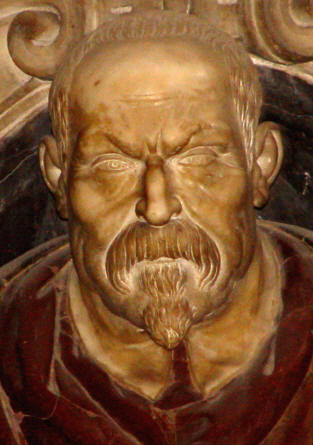
Prospero Farinacci (Detail)
Cenotaph
in memory of Prospero Farinacci (1544-1618), attributed to Domenico
Fontana (1543-1607), in the Church of S. Silvestro al Quirinale in Rome. |
7. If judges have
sufficient proof to permit torture, they must issue a decree in which all
the evidence is cited. The defendant may appeal the decree to a
higher court
8. If a judge proceeds
to torture a person after an appeal has been made, any confession is
completely null and void
9. If a defendant
does not confess under torture, it may not be repeated unless there is
compelling new evidence. If a judge repeats torture without new
evidence, the confession is null and void
10. If defendants have
confessed under torture and refuse to "ratify" their confession in court,
they can be tortured again. But only once.
11. The evidence
against defendants must be given to them before torture. A defendant
may not renounce a right to defense. The judge must gather evidence
for a recalcitrant defendant.
12. Witnesses can only
be tortured if they give vacillating testimony and if they have been given
the same rights as defendants. |